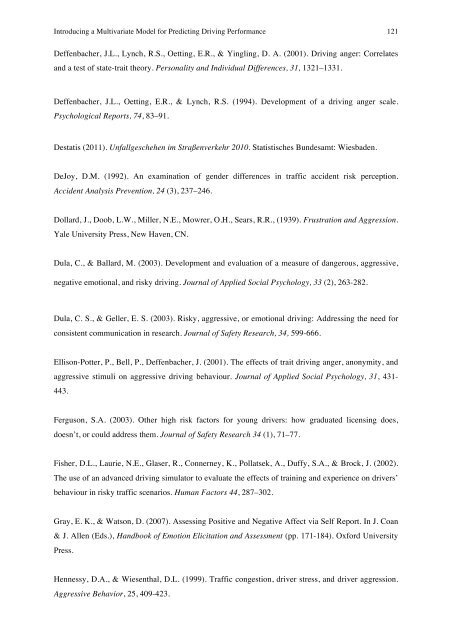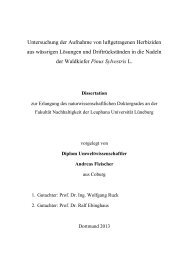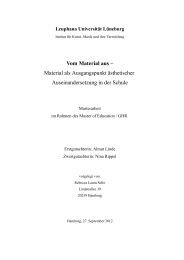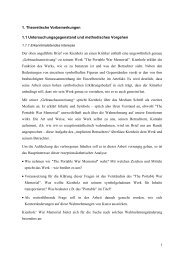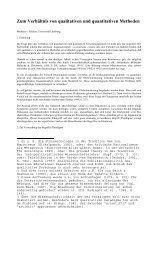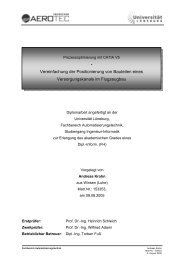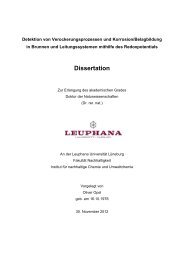Determinants of Emotional Experiences in Traffic Situations ... - OPUS
Determinants of Emotional Experiences in Traffic Situations ... - OPUS
Determinants of Emotional Experiences in Traffic Situations ... - OPUS
Create successful ePaper yourself
Turn your PDF publications into a flip-book with our unique Google optimized e-Paper software.
Introduc<strong>in</strong>g a Multivariate Model for Predict<strong>in</strong>g Driv<strong>in</strong>g Performance 121<br />
Deffenbacher, J.L., Lynch, R.S., Oett<strong>in</strong>g, E.R., & Y<strong>in</strong>gl<strong>in</strong>g, D. A. (2001). Driv<strong>in</strong>g anger: Correlates<br />
and a test <strong>of</strong> state-trait theory. Personality and Individual Differences, 31, 1321–1331.<br />
Deffenbacher, J.L., Oett<strong>in</strong>g, E.R., & Lynch, R.S. (1994). Development <strong>of</strong> a driv<strong>in</strong>g anger scale.<br />
Psychological Reports, 74, 83–91.<br />
Destatis (2011). Unfallgeschehen im Straßenverkehr 2010. Statistisches Bundesamt: Wiesbaden.<br />
DeJoy, D.M. (1992). An exam<strong>in</strong>ation <strong>of</strong> gender differences <strong>in</strong> traffic accident risk perception.<br />
Accident Analysis Prevention, 24 (3), 237–246.<br />
Dollard, J., Doob, L.W., Miller, N.E., Mowrer, O.H., Sears, R.R., (1939). Frustration and Aggression.<br />
Yale University Press, New Haven, CN.<br />
Dula, C., & Ballard, M. (2003). Development and evaluation <strong>of</strong> a measure <strong>of</strong> dangerous, aggressive,<br />
negative emotional, and risky driv<strong>in</strong>g. Journal <strong>of</strong> Applied Social Psychology, 33 (2), 263-282.<br />
Dula, C. S., & Geller, E. S. (2003). Risky, aggressive, or emotional driv<strong>in</strong>g: Address<strong>in</strong>g the need for<br />
consistent communication <strong>in</strong> research. Journal <strong>of</strong> Safety Research, 34, 599-666.<br />
Ellison-Potter, P., Bell, P., Deffenbacher, J. (2001). The effects <strong>of</strong> trait driv<strong>in</strong>g anger, anonymity, and<br />
aggressive stimuli on aggressive driv<strong>in</strong>g behaviour. Journal <strong>of</strong> Applied Social Psychology, 31, 431-<br />
443.<br />
Ferguson, S.A. (2003). Other high risk factors for young drivers: how graduated licens<strong>in</strong>g does,<br />
doesn’t, or could address them. Journal <strong>of</strong> Safety Research 34 (1), 71–77.<br />
Fisher, D.L., Laurie, N.E., Glaser, R., Connerney, K., Pollatsek, A., Duffy, S.A., & Brock, J. (2002).<br />
The use <strong>of</strong> an advanced driv<strong>in</strong>g simulator to evaluate the effects <strong>of</strong> tra<strong>in</strong><strong>in</strong>g and experience on drivers’<br />
behaviour <strong>in</strong> risky traffic scenarios. Human Factors 44, 287–302.<br />
Gray, E. K., & Watson, D. (2007). Assess<strong>in</strong>g Positive and Negative Affect via Self Report. In J. Coan<br />
& J. Allen (Eds.), Handbook <strong>of</strong> Emotion Elicitation and Assessment (pp. 171-184). Oxford University<br />
Press.<br />
Hennessy, D.A., & Wiesenthal, D.L. (1999). <strong>Traffic</strong> congestion, driver stress, and driver aggression.<br />
Aggressive Behavior, 25, 409-423.<br />
!


